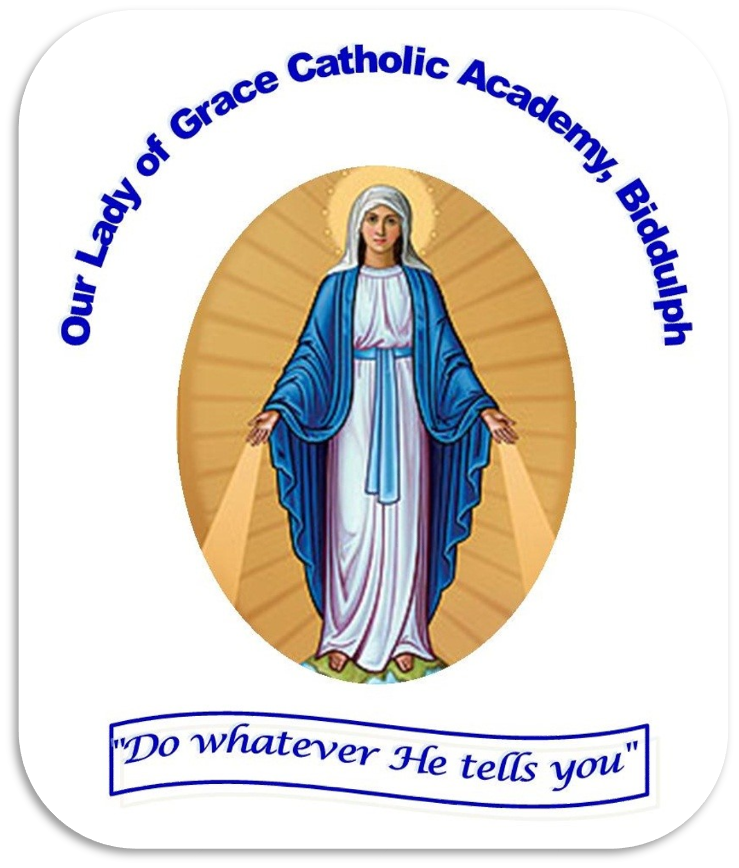- About Us
- Key Information
- Curriculum at Our Lady of Grace
- Art and Design Technology
- Art
- Progression in Art
Progression in Art
|
Progression in ART knowledge, concepts & skills |
Year 1 |
Year 2 |
Year 3 |
Year 4 |
Year 5 |
Year 6 |
||
|
Using materials
concepts (pattern colour shape form texture)
|
know how to cut, roll & coil materials
know how to use IT to create a picture |
know how to create a printed piece of art by pressing, rolling, rubbing and stamping
know how to make a clay pot and know how to join two clay finger pots together
know how to use different effects within an IT paint package |
|
|
|
|
||
|
Drawing
concepts (line colour shape tone form texture)
|
know how to show how people feel in paintings and drawings
know how to use pencils to create lines of different thickness in drawings. |
choose and use three different grades of pencil when drawing
know how to use charcoal, pencil and pastel to create art know how to use a viewfinder to focus on a specific part of an artefact before drawing it |
know how to show facial expressions in art
know how to use different grades of pencil to shade and to show different tones and textures
know how to create a background using a wash
know how to use a range of brushes to create different effects in painting |
know how to show facial expressions and body language in sketches and paintings
know how to use marks and lines to show texture in art
know how to use line, tone, shape and colour to represent figures and forms in movement and know how to show reflections
know how to print onto different materials using at least four colours |
know how to sculpt clay and other mouldable materials. know how to use shading to create mood and feeling
know how to organise line, tone, shape and colour to represent figures and forms in movement
know how to express emotion in art |
know how to create an accurate print design following given criteria know how to overprint to create different patterns
know which media to use to create maximum impact use a full range of pencils, charcoal or pastels when creating a piece of observational art |
||
|
Drawing, painting & sculpture
concepts (line pattern colour shape tone form texture)
|
||||||||
|
Use colour, pattern, texture, line, form, space & shape
concepts (line pattern colour shape tone form texture)
|
know how to create moods in art work
know the names of the primary and secondary colours
know how to create a repeating pattern in print |
know how to mix paint to create all the secondary colours
know how to create brown with paint
know how to create tints with paint by adding white and know how to create tones with paint by adding black |
|
|
|
|
||
|
Using Sketchbooks
concepts (line colour tone texture)
|
|
|
know how to use sketches to produce a final piece of art
know how to use digital images and combine with other media
know how to use IT to create art which includes their own work and that of others |
know how to integrate digital images into artwork
use sketchbooks to help create facial expressions
use sketchbooks to experiment with different texture use photographs to help create reflections |
experiment by using marks and lines to produce texture
experiment with shading to create mood and feeling
experiment with media to create emotion in art know how to use images created, scanned and found; altering them where necessary to create art |
explain why different tools have been used to create art
explain why chosen specific techniques have been used
know how to use feedback to make amendments and improvement to art
know how to use a range of e-resources to create art |
||
|
Range of Artists
concepts (pattern colour shape)
|
describe what can be seen and give an opinion about the work of an artist
ask questions about a piece of art |
suggest how artists have used colour, pattern and shape know how to create a piece of art in response to the work of another artist |
know how to identify the techniques used by different artists
know how to compare the work of different artists
recognise when art is from different cultures recognise when art is from different historical periods |
experiment with the styles used by other artists
explain some of the features of art from historical periods
know how different artists developed their specific techniques |
research the work of an artist and use their work to replicate a style |
explain the style of art used and how it has been influenced by a famous artist
understand what a specific artist is trying to achieve in any given situation
understand why art can be very abstract and what message the artist is trying to convey |
||
